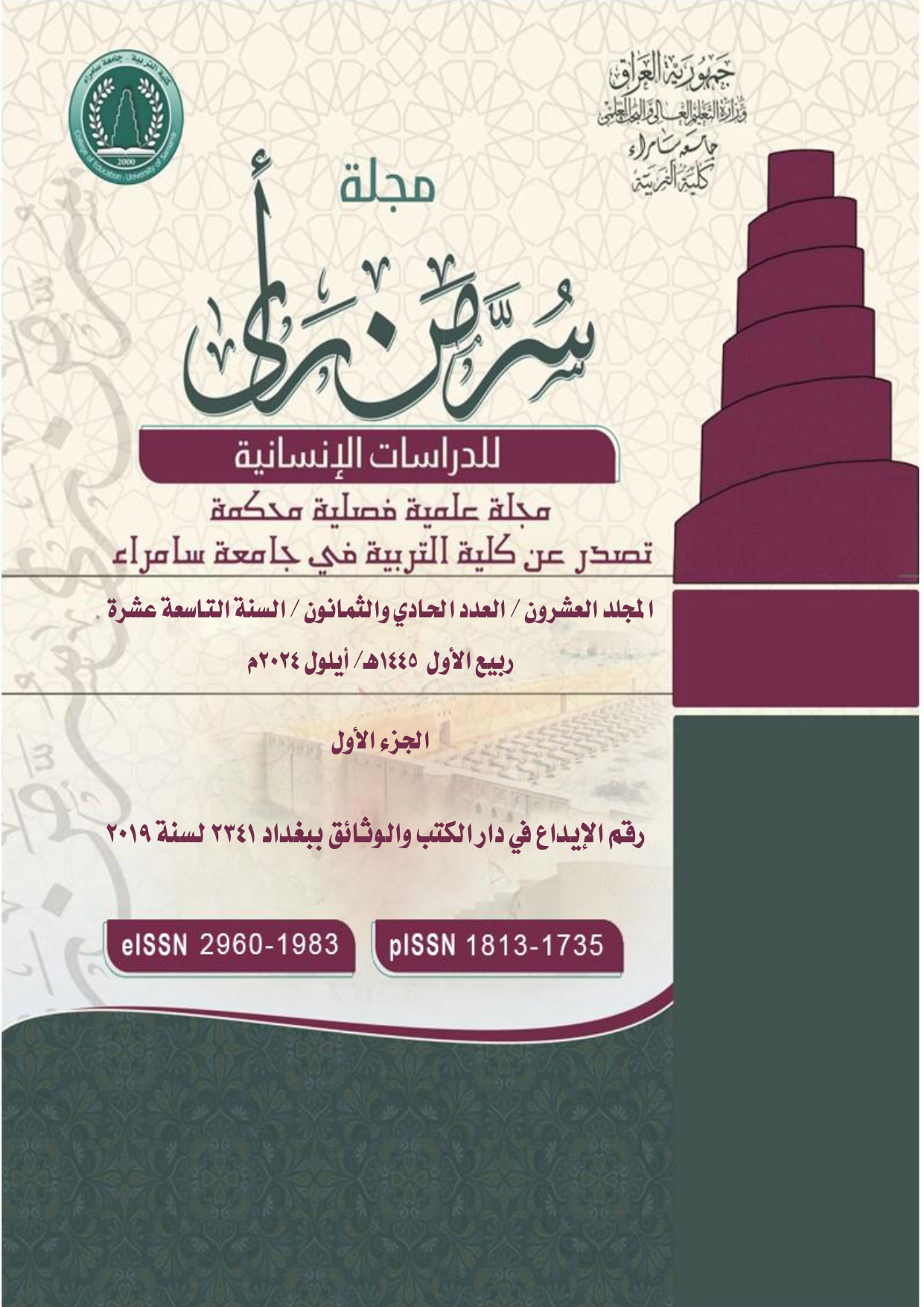Abstract
This research aim to clarify the issue of the pronunciation of second consonant of (a’ib) and other agent nouns with the same form, where the first letter of the verb is a hamza (glottal stop), and the second is a vowel. Is it necessary, or even permissible to replace the second consonant with a ya, or is it impermissible? Also, is there a difference between the agent nouns whose first letter is a hamza (e.g., a’ib) and others (e.g., qa’il)? This is because many contemporary scholars restrict this change into a ya to the agent nouns that start with a hamza.
The research consists of three sections: the first is defining the problem and enumerating all the relevant nouns (which were eleven). The second section is to show that it is obligatory to pronounce the second consonant of these words as a hamza. In this section, I looked at the texts of scholar which, being expressed in general terms, indicate that the use of hamza (in the second letter) includes the form of a’ib, as it includes the form of qa’il. Then, a collection of texts and scripts was presented, which show that they used to pronounce some of the words of the same form as a’ib with a hamza. The third section deals with discussing the different schools of early and contemporary scholars regarding the takhfif of the hamza in these words (i.e., the process of pronouncing the glottal stop, meaning the hamza, with incomplete obstruction of the air stream at the glottis). Here, it was shown that the early scholars unanimously agreed that the takhfif of this form, in the dialect of those Arabs who weaken the hamza, is in fact by turning the hamza into a sound halfway between the hamza and the ya, and not but turning it into a pure ya. Then, the school of some contemporary scholars who consider it correct to change the hamza into a ya (in the form of a’ib) was addressed, and the leading figure of this school is Nasr al-Huwairini. The proofs of this school were mentioned and discussed one by one.
The research concludes that all of these proofs cannot be confirmed, and that there is no difference between the form of qa’il and that of a’ib in the fact that that both should be pronounced with a hamza, and that it is permissible to weaken the hamza into a sound halfway between the hamza and ya, but not into a pure ya.
The research consists of three sections: the first is defining the problem and enumerating all the relevant nouns (which were eleven). The second section is to show that it is obligatory to pronounce the second consonant of these words as a hamza. In this section, I looked at the texts of scholar which, being expressed in general terms, indicate that the use of hamza (in the second letter) includes the form of a’ib, as it includes the form of qa’il. Then, a collection of texts and scripts was presented, which show that they used to pronounce some of the words of the same form as a’ib with a hamza. The third section deals with discussing the different schools of early and contemporary scholars regarding the takhfif of the hamza in these words (i.e., the process of pronouncing the glottal stop, meaning the hamza, with incomplete obstruction of the air stream at the glottis). Here, it was shown that the early scholars unanimously agreed that the takhfif of this form, in the dialect of those Arabs who weaken the hamza, is in fact by turning the hamza into a sound halfway between the hamza and the ya, and not but turning it into a pure ya. Then, the school of some contemporary scholars who consider it correct to change the hamza into a ya (in the form of a’ib) was addressed, and the leading figure of this school is Nasr al-Huwairini. The proofs of this school were mentioned and discussed one by one.
The research concludes that all of these proofs cannot be confirmed, and that there is no difference between the form of qa’il and that of a’ib in the fact that that both should be pronounced with a hamza, and that it is permissible to weaken the hamza into a sound halfway between the hamza and ya, but not into a pure ya.
Keywords
al-i’lalal
a’ib
a’il
linguistic correction
Nasr al-Hurini
weakening the hamza
Abstract
يسعَى هذا البحث إلى بيان القول في عين (آئب) وبابها من كل اسم فاعل مهموز الفاء معتلّ العين، أفيجب أو يجوز إبدال هذه العين ياءً أم يمتنع ذلك، وهل من فرق بين المهموز الفاء كـ(آئب) وغيره كـ(قائل)، وذلك لاختصاص كثير من المعاصرين في كلامهم وكتابتهم المهموزَ الفاء دون غيره بإبداله ياءً. وقد جاء البحث في ثلاثة مباحث، أولها في حدّ المسألة وإحصاء ألفاظها. وقد بلغت أحد عشر لفظًا. والثاني في بيان استحقاق هذه الألفاظ همزَ عيناتها. وقد ذُكرت فيه نصوصُ العلماء الدالة بعموم ألفاظها على شمول الهمز بابَ (آئب) كما يشمل باب (قائل)، ثم ذُكِرت طائفة من النصوص والخطوط التي تدلّ على همزهم بعض ألفاظ باب (آئب). والثالث في ذكر مذاهب المتقدمين والمعاصرين في تخفيف همز عينات هذه الألفاظ. وقد بُيِّنَ فيه إجماع المتقدمين على أن تخفيف عموم هذا الباب في لغة أهل التخفيف إنما يكون بإبدال همزته بين بين، لا ياءً محضة، ثم ذُكِر مذهبُ بعض المعاصرين الذين جوّزا في باب (آئب) الإبدال المحض، ورائدهم نصر الهوريني، وعُرِضت أدلتهم ونوقشت دليلًا دليلًا، وانتهى البحث إلى أنه لا يثبت منها دليل، وأنه لا فرق بين باب (قائل) وباب (آئب) في استحقاقهما الهمز وفي جواز تخفيفهما بين بين لا بالياء الخالصة.
Keywords
آئب، آئل، تخفيف الهمز، الإعلال، نصر الهوريني، التصحيح اللغوي
